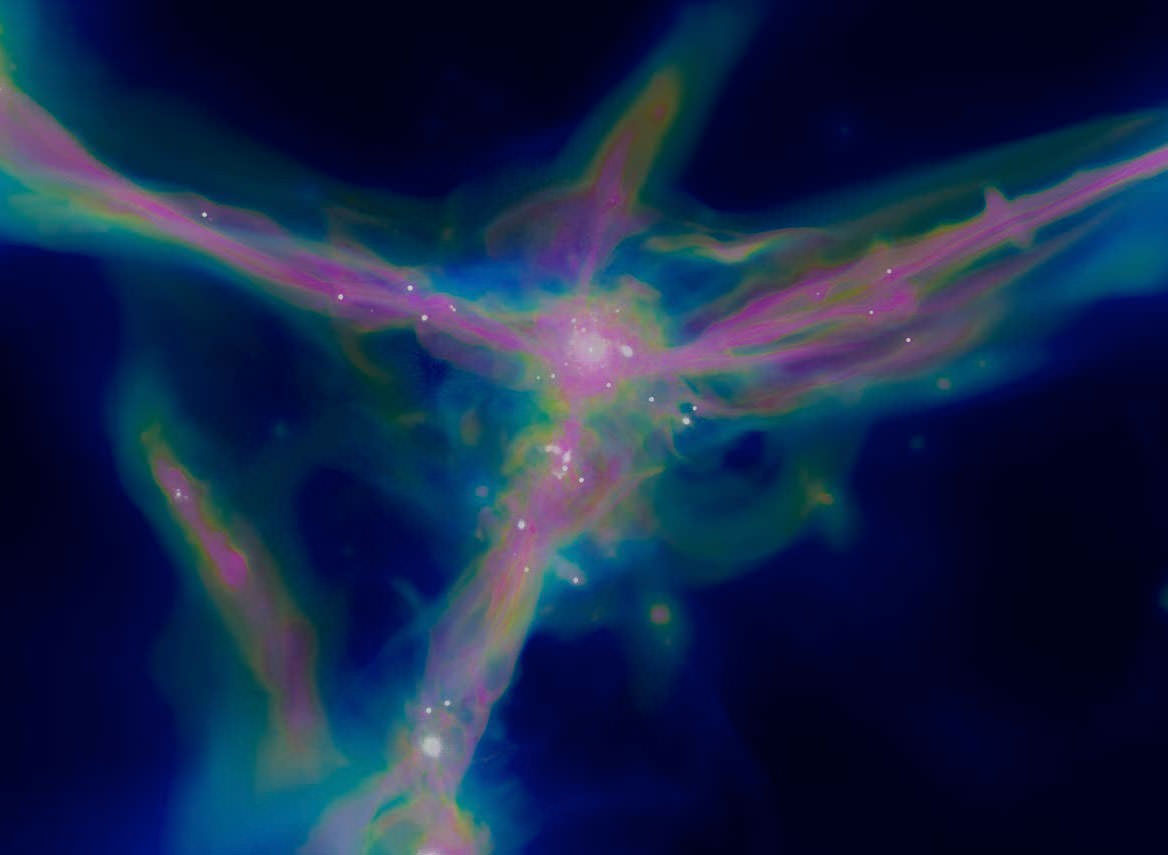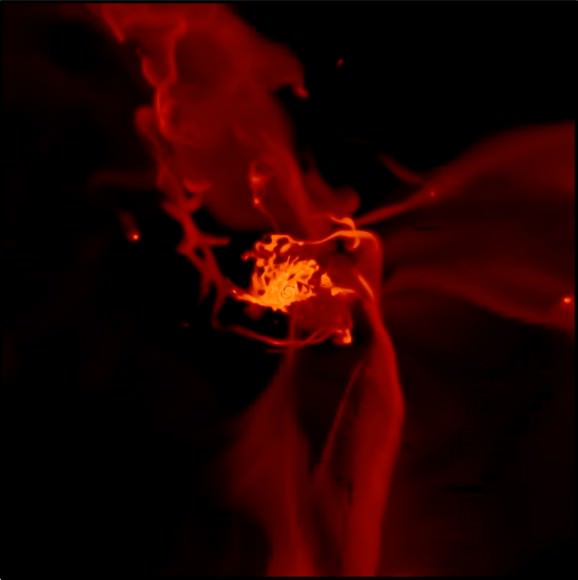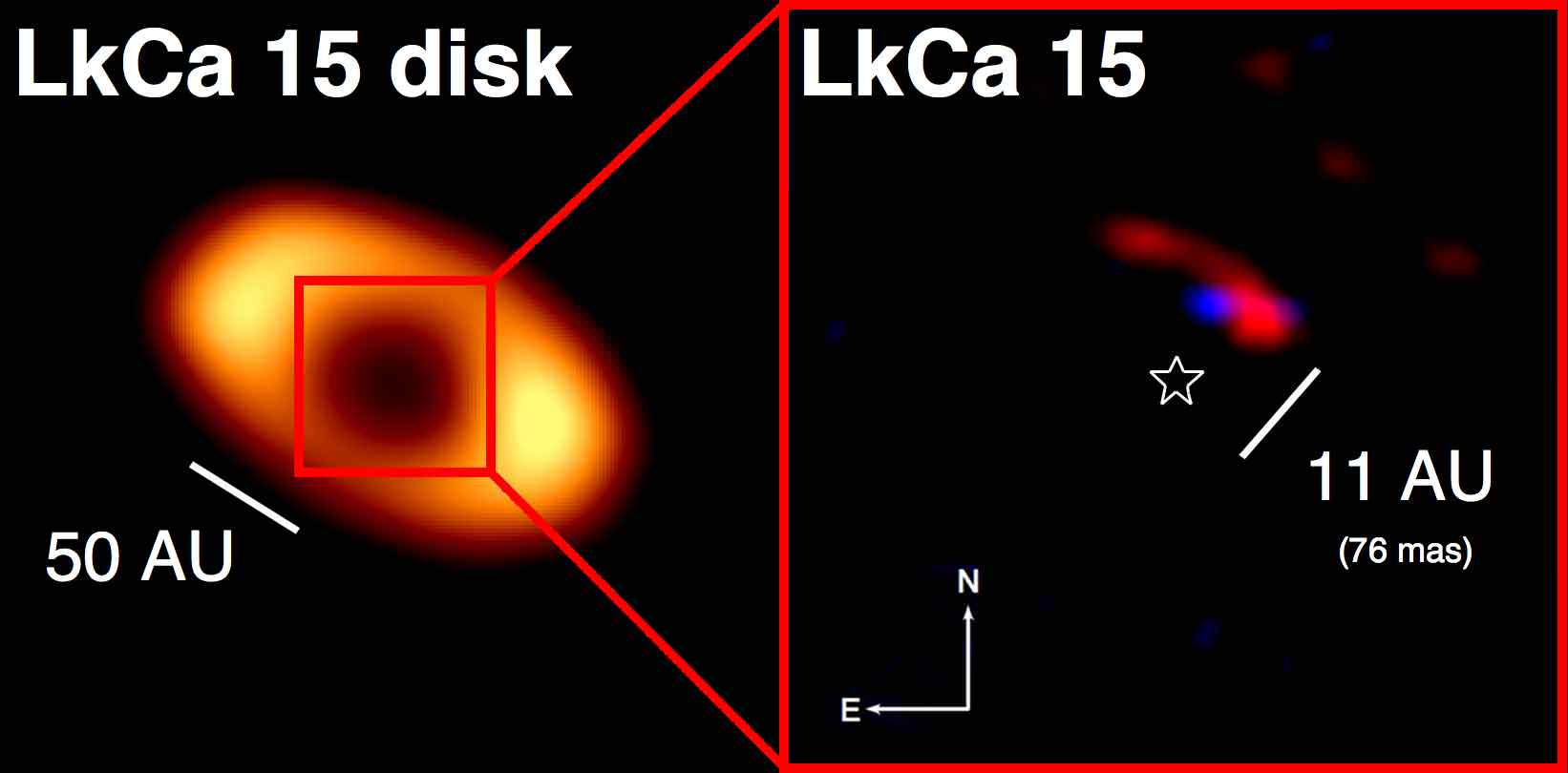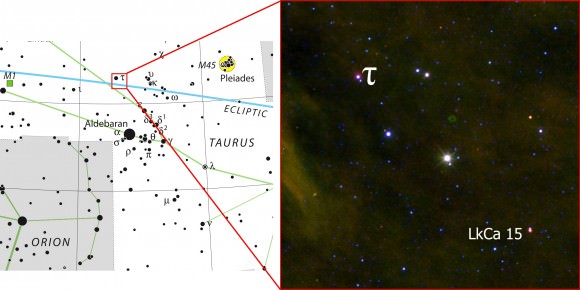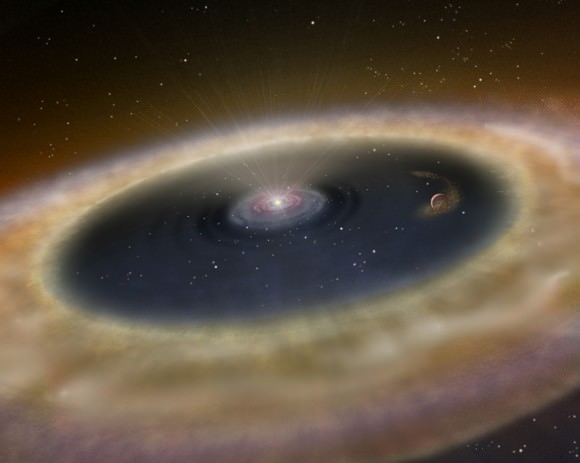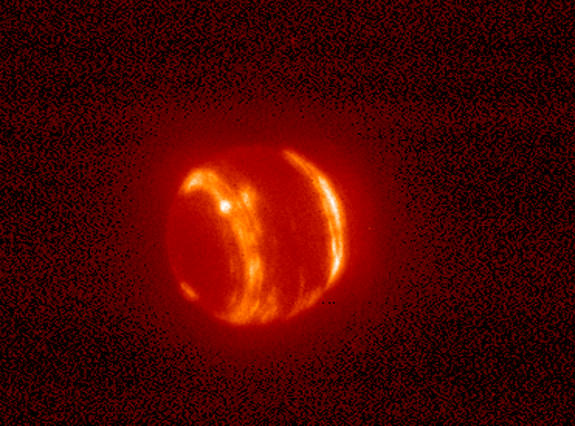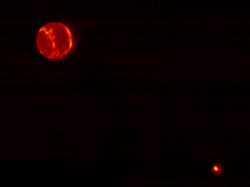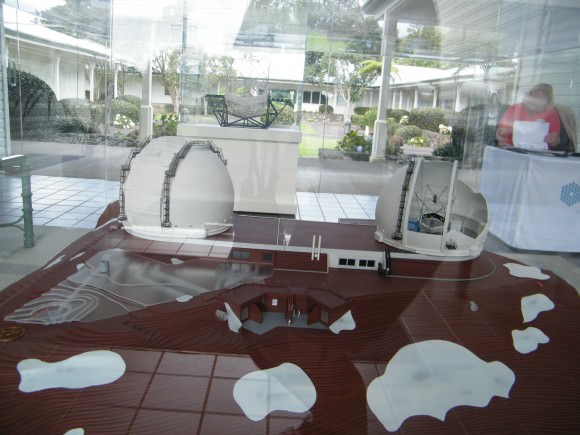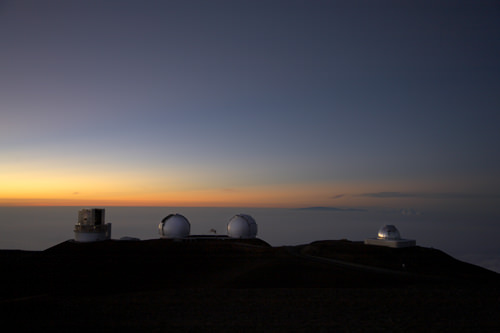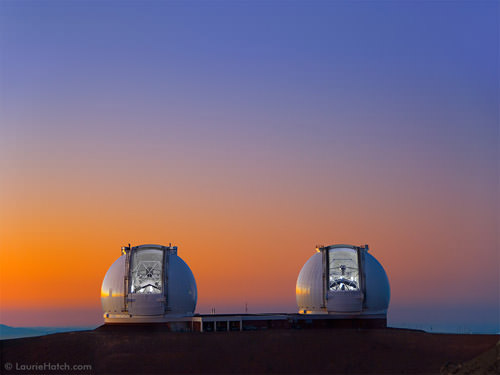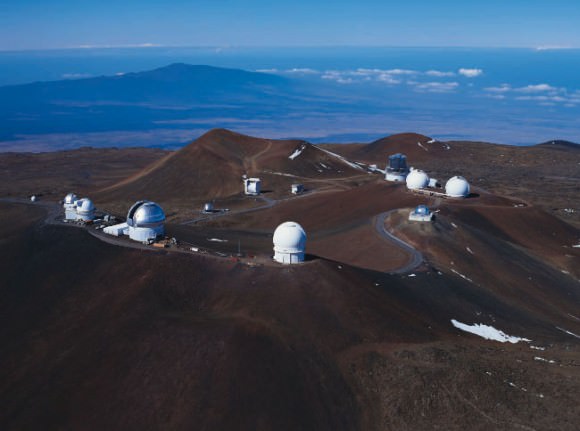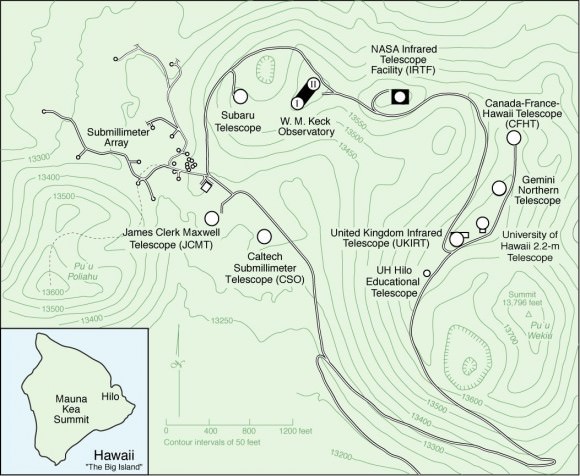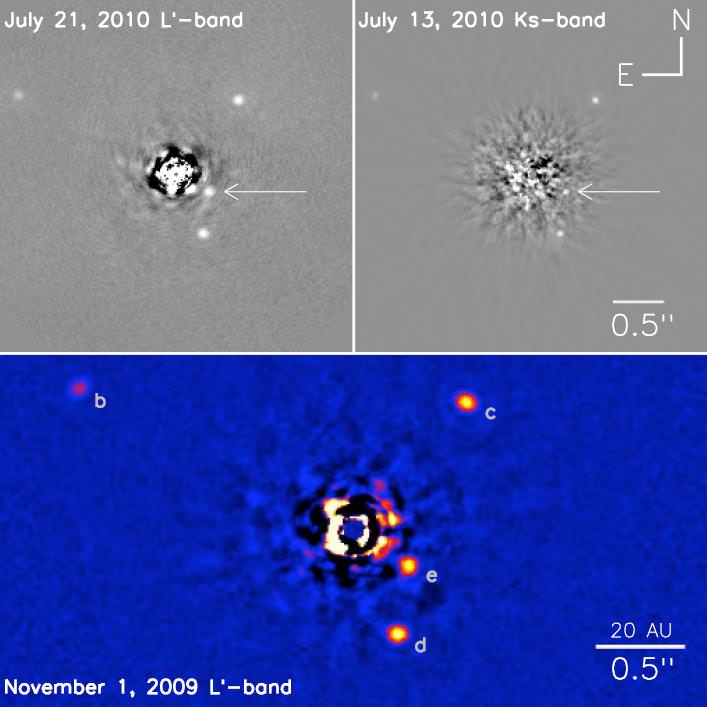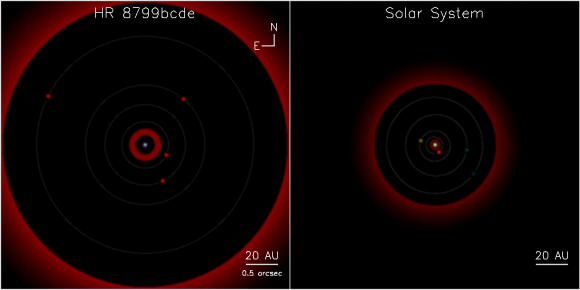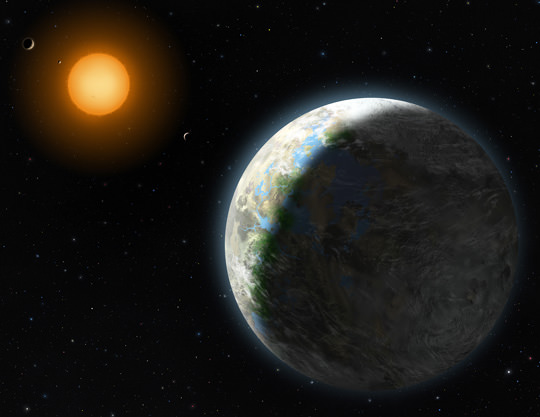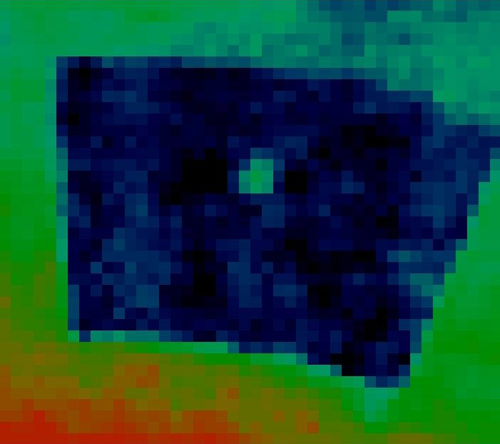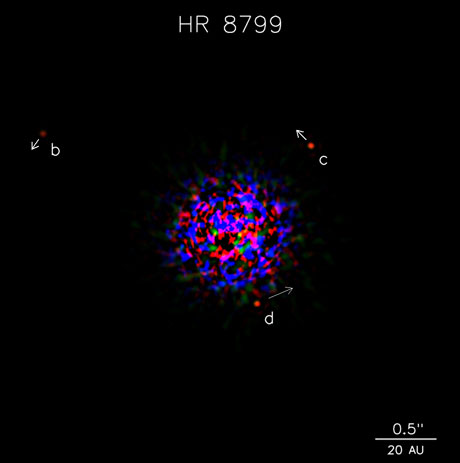A new-found planet is in a ‘just-right’ location around its star where liquid water could possibly exist on the planet’s surface. A team of international astronomers have discovered a potentially habitable super-Earth orbiting a nearby star in a habitable zone, where it isn’t too hot or too cold for liquid water to exist. The planet, GJ 667Cc, has an orbital period of about 28 days and with a mass about 4.5 times that of the Earth. The star that it orbits is quite interesting. It is an M-class dwarf star and is a member of a triple star system and appears to be quite different from our Sun, relatively lacking in metallic elements.
The team said this discovery demonstrates that habitable planets could form in a greater variety of environments than previously believed.
“This was expected to be a rather unlikely star to host planets,” said Steven Vogt from UC Santa Cruz, one of the scientists involved in the discovery. “Yet there they are, around a very nearby, metal-poor example of the most common type of star in our galaxy. The detection of this planet, this nearby and this soon, implies that our galaxy must be teeming with billions of potentially habitable rocky planets.”
“This planet is the new best candidate to support liquid water and, perhaps, life as we know it,” said Guillem Anglada-Escudé, from the University of Gottingen in Germany. He was with the Carnegie Institute for Science when the planet was first discovered.
The planet orbits quite close to its parent star at 0.12 astronomical units, which is much closer than Mercury to the Sun. However, the Planetary Habitability Laboratory says the star is much dimmer and provides enough energy for the planet to possibly maintain similar terrestrial temperatures. There’s a caveat, though, that astronomers aren’t sure what the planet’s composition is, because they have not been able to measure its size; therefore, it could be a either a rocky or a gas planet. I would need to have a radius between about 1.7 and 2.2 Earth radii to be a rocky world.
The team used public data from the European Southern Observatory combined with observations from the Keck Observatory in Hawaii and the new Carnegie Planet Finder Spectrograph at the Magellan II Telescope in Chile. To follow up and verify the findings, the team used the radial velocity method to measures the small wobbles in the star’s motion caused by the gravitational tug of a planet.
“With the advent of a new generation of instruments, researchers will be able to survey many M dwarf stars for similar planets and eventually look for spectroscopic signatures of life in one of these worlds,” said Anglada-Escudé.
The star, GJ 667C is 22 light years away. It has much lower abundance of elements heavier than helium, such as iron, carbon, and silicon, as does our Sun. The other two stars (GJ 667A and B) are a pair of orange K dwarfs, with a concentration of heavy elements only 25% that of our Sun’s. Such elements are the building blocks of terrestrial planets so it was thought to be unusual for metal-depleted star systems to have an abundance of low mass planets.
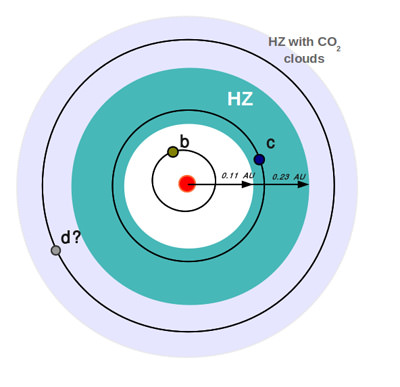
GJ 667C had previously been observed to have another super-Earth (GJ 667Cb) with a period of 7.2 days, although this finding was never published. This orbit is too tight, and thus hot, to support life. The new study started with the aim of obtaining the orbital parameters of this super-Earth, and came to find an additional planet.
The new planet receives 90% of the light that Earth receives. However, because most of its incoming light is in the infrared, a higher percentage of this incoming energy should be absorbed by the planet. When both these effects are taken into account, the planet is expected to absorb about the same amount of energy from its star that the Earth absorbs from the Sun. This would allow surface temperatures similar to Earth and perhaps liquid water, but this extreme cannot be confirmed without further information on the planet’s atmosphere.
The team said there is a possibility of other planets in the system, potentially a gas-giant planet and an additional super-Earth with an orbital period of 75 days. However, further observations are needed to confirm these two possibilities.
This is the fourth potentially habitiable extrasolar planet. Three were found in 2011: Gliese 581d, which scientists say is likely a rocky world about 20 ight-years away; HD 85512 b, another planet orbiting in a habitable zone is about 36 light-years away from Earth; and Kepler 22b, about 600 light-years away. Vogt was involved in the discovery of another planet in 2010 (Gliese 581g) in which he said the “chances of life on this planet are 100%,” but other astronomers have cast doubt on whether that planet even exists.
Papers:
The HARPS search for southern extra-solar planets XXXI. The M-dwarf sample, and A planetary system around the nearby M dwarf GJ 667C with at least one super-Earth in its habitable zone (will add link when it becomes available)
Sources: UC Santa Cruz, Carnegie Institute for Science, Planetary Habitability Laboratory



